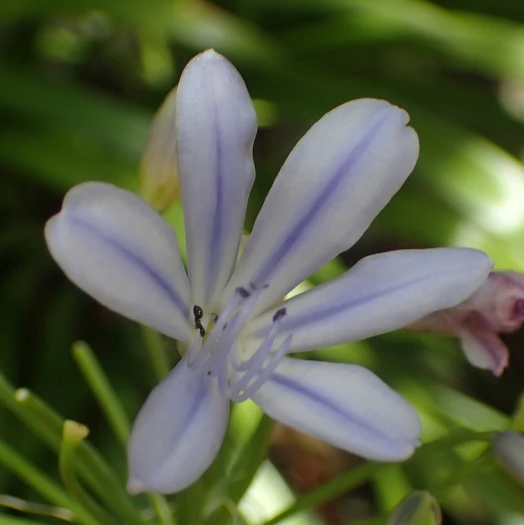Adelaide Agapanthus
(Agapanthus praecox subsp. minimus)
Adelaide Agapanthus (Agapanthus praecox subsp. minimus)
/
/

Nicola van Berkel
CC BY-SA 4.0
Image By:
Nicola van Berkel
Recorded By:
Copyright:
CC BY-SA 4.0
Copyright Notice:
Photo by: Nicola van Berkel | License Type: CC BY-SA 4.0 | License URL: http://creativecommons.org/licenses/by-sa/4.0/ | Rights Holder: Nicola van Berkel | Publisher: iNaturalist | Date Created: 2021-01-31T13:35:19-08:00 |

























Estimated Native Range
Climate Requirements
| • Precipitation | 20" - 58" |
| • High Temp. | 70°F - 81°F |
| • Low Temp. | 37°F - 51°F |
Summary
Agapanthus praecox subsp. minimus, commonly known as Adelaide Agapanthus, is an evergreen perennial herb that originates from the coastal regions and grasslands of South Africa. It typically grows to a height of 2-3 feet (0.6-0.9 meters) and spreads 1-2 feet (0.3-0.6 meters) wide. This plant forms clumps of strap-shaped, glossy green leaves and is known for its striking umbels of funnel-shaped, blue flowers that bloom on tall stalks in the summer. The flowers are quite showy and make Adelaide Agapanthus a popular ornamental plant.
Adelaide Agapanthus is valued for its low maintenance, drought tolerance once established, and the vibrant blue color it adds to the landscape. It is commonly used in borders, container gardening, and as a ground cover. It thrives in full sun to partial shade and prefers well-drained soil. While it tolerates a range of soil types, it performs best in fertile, loamy soils. Overwatering or poor drainage can lead to root rot. In areas where winter temperatures drop below freezing, it should be grown in pots and brought indoors or provided with mulch for root protection. It is generally pest-free but can be susceptible to snails and slugs.CC BY-SA 4.0
Adelaide Agapanthus is valued for its low maintenance, drought tolerance once established, and the vibrant blue color it adds to the landscape. It is commonly used in borders, container gardening, and as a ground cover. It thrives in full sun to partial shade and prefers well-drained soil. While it tolerates a range of soil types, it performs best in fertile, loamy soils. Overwatering or poor drainage can lead to root rot. In areas where winter temperatures drop below freezing, it should be grown in pots and brought indoors or provided with mulch for root protection. It is generally pest-free but can be susceptible to snails and slugs.CC BY-SA 4.0
Plant Description
- Plant Type: Bulb
- Height: 2-3 feet
- Width: 1-2 feet
- Growth Rate: Moderate
- Flower Color: Blue, White
- Flowering Season: Fall, Winter
- Leaf Retention: Evergreen
Growth Requirements
- Sun: Full Sun
- Water: Medium
- Drainage: Slow, Medium
Common Uses
Bee Garden, Bird Garden, Butterfly Garden, Deer Resistant, Drought Tolerant, Groundcover, Hummingbird Garden, Low Maintenance, Rabbit Resistant, Showy Flowers, Street Planting
Natural Habitat
Originates from the coastal regions and grasslands of South Africa
Other Names
Common Names: Blue Lily
Scientific Names: Agapanthus praecox subsp. minimus, Agapanthus comptonii, Agapanthus comptonii subsp. longitubis, Agapanthus longispathus, Agapanthus umbellatus var. minimus
GBIF Accepted Name: Agapanthus praecox subsp. minimus (Lindl.) F.M.Leight.